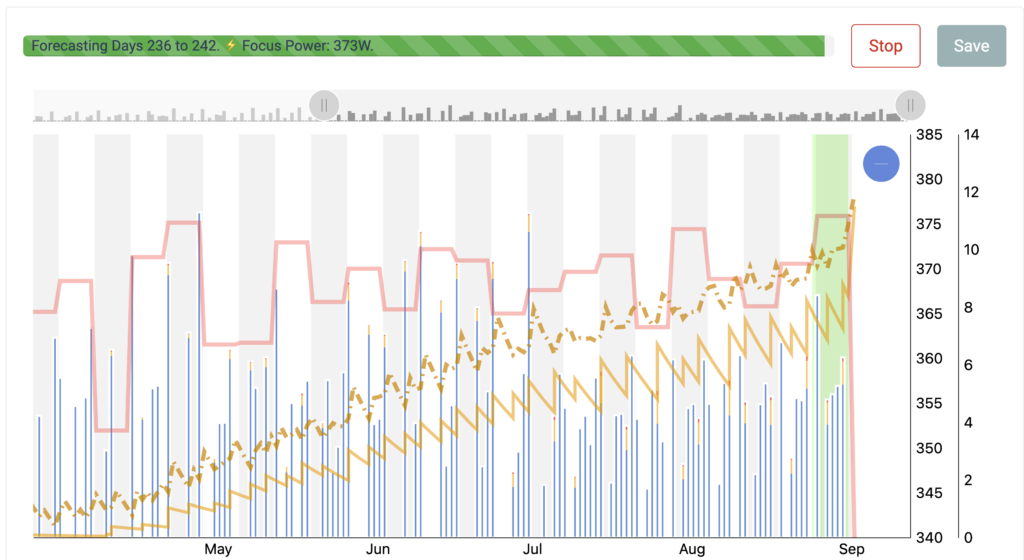
Figure A – Increasing High Intensity Training as the Training Plan progresses.
Periodization of training is the intentional change in training prescription over the course of a training plan in order to reduce the overall training volume, improve results and avoid over training. In Xert, training is periodized and structured in order to help athletes achieve their goals whilst minimizing the training volume involved. This change in focus during a training plan enables the athlete to target the systems that are most responsive to training when this training is most effective.
For example, a 200-day training plan that is not periodized would have you training the same way throughout the plan whereas when it’s periodized you may start with base training initially and add in more high-intensity training the closer you get to the event date. This change from base to build is a periodization example that is applied in order to maximize the benefit of the high-intensity training since it has greater effect closer to the event date. High intensity training has less benefit relative to low intensity training, the further away from the event date.
Xert users can control the effect of periodization using this slider. In the vast majority of cases, you’ll want to leave it at the default setting of 2.5%. You may want to reduce the setting if you prefer to progressively train all systems at all times and would rather not see periodization. Some coaches and training methods advocate and promote high intensity training throughout a training plan and reducing this value in Xert by sliding it left allows you to include more high intensity training.
You can experiment and do “what-if” scenarios with your training plan by sliding this left or right and clicking the Forecast AI button to see what the system will generate with less/more periodization applied. You’ll notice a greater effect, the longer the plan. For example, any plan that’s periodized and longer than 100 days or so, will have you doing base training at the beginning of the plan exclusively. Xert calculates the periodization as part of the plan and it’s based on the level you choose and the time constants used in the underlying Banister impulse-response model applied to each system – low, high and peak.